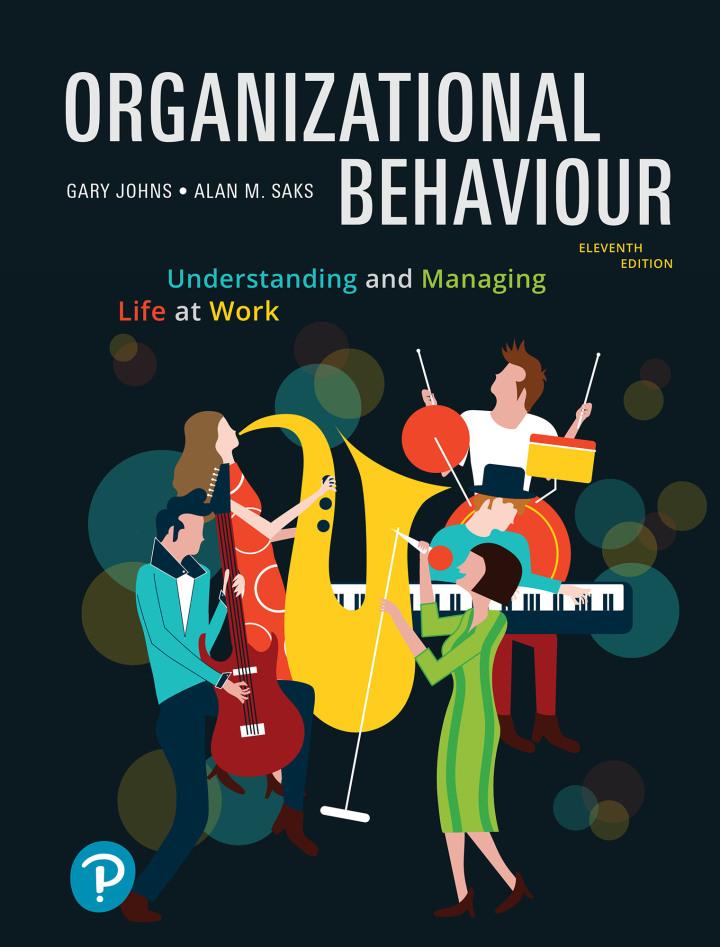Question
Pete was a young and ambitious employee who had been with the Opensource an IT Company for two years. He had built a reputation as
Pete was a young and ambitious employee who had been with the Opensource an IT Company for two years. He had built a reputation as a hard worker and a solid performer and had participated as a junior member of an extremely successful consulting team demonstrating the benefits of modern integrative IT solutions to clients. Pete was well liked by older employees for his willingness to put in what it took to get the job done, but he was also admired by newer employees for his apparent ability to balance work demands with an active personal life consisting of attending the most current live music and trying out the newest local restaurants.
In his third year at the organization, Pete's job responsibilities changed to focus on a long-term project that would last for the next two years. In making the shift to the new responsibilities, Pete was advised by a senior manager to solicit the help of Claire, a new employee who had been hired because of her expertise on projects like the one Pete was starting. Although Claire was just starting with the organization, because of her experience at other similar organizations, she had been brought on as a middle manager. Although Claire wouldn't be Pete's primary supervisor, involving her would mean that Pete would need to keep her apprised of his progress and follow her suggestions. Pete had heard very positive things about Claire and was excited to benefit from her knowledge and skills. Pete was eager for professional development and was hoping for a mentorship relationship from Claire.
As Pete and Claire began the project, they seemed to work well together. Their early discussions focused on the work to be completed, and each expressed opinions and suggestions for how to proceed. These discussions vastly improved the plan for completing Pete's project. Pete mostly worked autonomously, but reported periodically to Claire to ask for advice and to report on his progress. After a while, Pete realized that the more he talked with Claire, the larger his project grew. Each time they would meet, she would add an idea or two that would increase his workload. Not wanting to offend her, and trusting in her experience, Pete simply agreed to the extra work. Over the next few months, his discussions with Claire became less frequent, partly because of the time it took to complete the extra work she had given him and partly because he wanted to avoid adding any more work. The early steps of the project were very flexible in terms of their timeline and tangible output, so the frequency of meetings was not a critical issue.
About six months later, Claire asked Pete if he would like to join her on a similar project that she was leading. In fact, Claire proposed that Pete extend his project to include her client and run his project concurrently with hers. This meant Claire and Pete would meet more often and work more closely. Since Claire was the lead consultant on her project, she would be Pete's direct supervisor with regard to his work on her project. Not wanting to pass up an opportunity with a skilled consultant, Pete agreed to join Claire's project.
Pete continued his practice of working on his own and reporting periodically to Claire. The later steps of his project took more time and lent themselves to less frequent reports. In the meantime, Pete had been busy working on Claire's project, including traveling several times to the client's location for two-day meetings. Progress on both projects occasionally stalled as problems arose but were quickly resolved. Pete
took these delays in stride, but Claire reacted negatively toward any holdup and began expressing her displeasure in cutting remarks and critical comments. Her discontent reached a peak one day when she summoned Pete to her office for a talk. She began by outlining the failures on her project, but then proceeded to criticize Pete for the failures on his. Pete admitted he could do better, but Claire's next series of comments took him completely by surprise. She told him that he had better shape up and start working harder or he would never get anywhere in their profession. Claire made it clear that she thought Pete was the source of the problems, both on her project and on his.
Pete walked away from this meeting stinging from the unexpected reprimand. Pete knew better than to fire back at Claire, so once she had finished her comments, he simply thanked her and left the room. However, the rebuke seemed to linger in the air for weeks. Over the next several months, Pete found himself less and less eager to see Claire. His communications with her became briefer and more task oriented. Unfortunately, the less he interacted with her, the more she seemed to disapprove of him personally. At the end of the projects, Pete was relieved to finally be free of his ties to Claire. The two never worked together again. Pete's engagement at his work begins to decline. His boss, Frank, comes to you as the HR Advisor asking what to do about Pete's performance. You see on LinkedIn that Pete is searching for jobs.
Step by Step Solution
3.36 Rating (171 Votes )
There are 3 Steps involved in it
Step: 1
HR Advisors Recommendations for Petes Situation 1 Assess Petes Wellbeing Schedule a private meeting with Pete to discuss his recent experiences and ga...
Get Instant Access to Expert-Tailored Solutions
See step-by-step solutions with expert insights and AI powered tools for academic success
Step: 2

Step: 3

Ace Your Homework with AI
Get the answers you need in no time with our AI-driven, step-by-step assistance
Get Started


